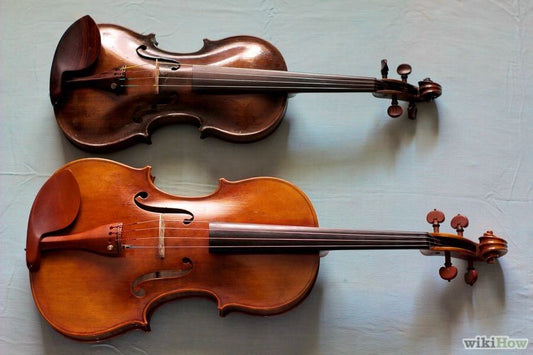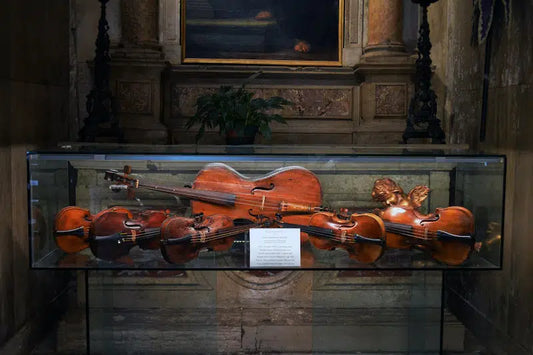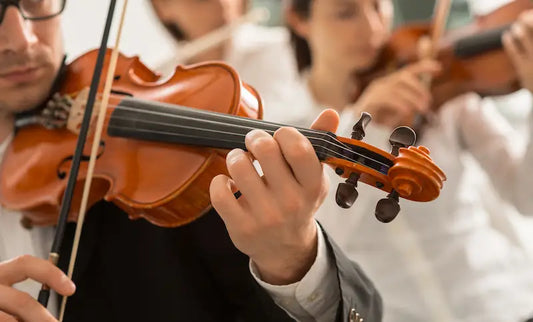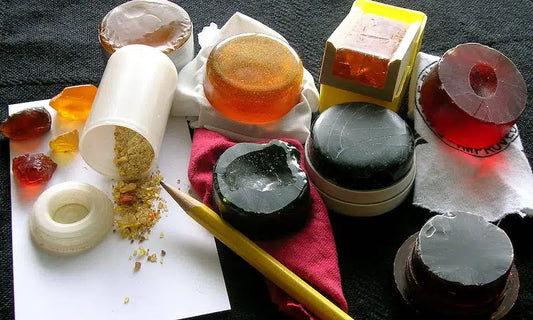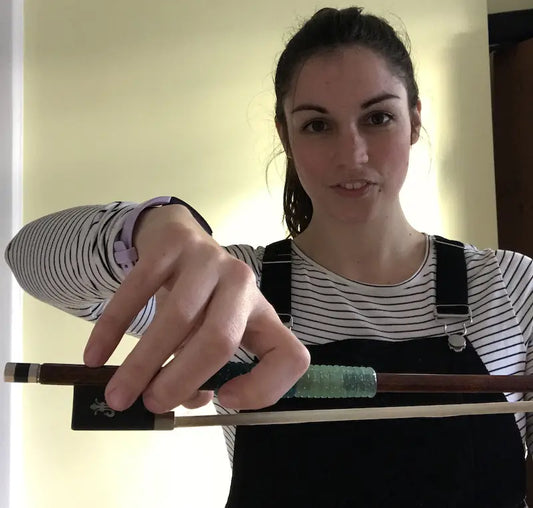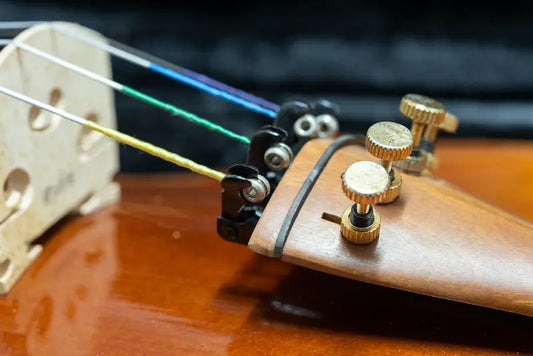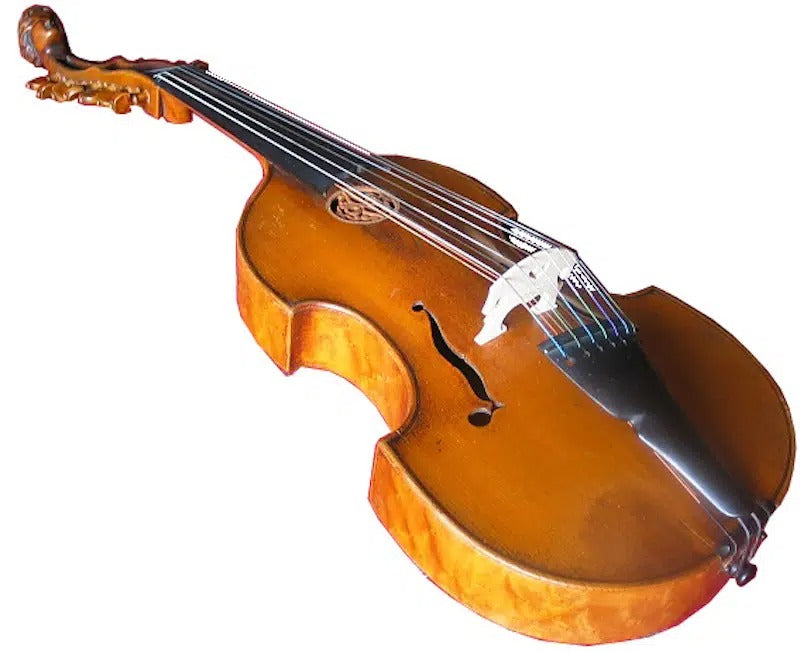
16 Interesting Facts About Viola
The Viola is a member of the "violin family", but unlike its popular cousin, not many people know about this unique stringed instrument.
1. The first viola was created in the 16th century

The history of the viola is closely linked to a number of other stringed instruments in the violin family. The modern-day viola dates back to the early to mid 16th century when it was first developed and played in Northern Italy. While the history of the viola is controversial, there are two people who are said to have contributed a lot to today's modern version of Viola. These two are Andrea Amati and Gaspare da Salo.
As we know, members of the modern stringed family get their names from the word "viola da braccio", which roughly translates as "on the arm", which is also the term used to distinguish between violin and violin. .
2. Viola - an interesting design

The traditional viola production process has remained largely unchanged to this day. One of the things that makes violas so special is that they are made from a variety of materials and carefully selected details to maximize the performance of the string instrument. Viola tops are usually made of spruce, while necks are made of ebony or maple, similar to the back and slits of a viola.
Ebony and maple give the viola its distinctive beauty, while also providing rigidity and sturdiness. The pieces are then carved and glued together before being varnished. The four strings of the viola are then added along with the tail, bridge, and other optional and smaller parts, such as the chin rest.
3. Viola is considered a great practice for fingers and arms
Although the viola is only slightly larger than the average violin, there is a noticeable difference between the weights of the two instruments. Carrying this extra weight can really strengthen your arms!
In addition to weight, the viola is also known for its relatively complex style of play that can work a variety of muscles, including fingers, wrists, and biceps. For that reason, many parents who want their children to strengthen their arms while playing music have encouraged them to play the viola!
4. Good Viola players are rare
Violas are often underestimated and forgotten, which is why viola players are quite rare. On the plus side, this means that anyone who learns to play it has less competition and more career opportunities ahead of them.
5. It took years to learn Viola
Since the viola is quite difficult to learn, it can take a beginner 3 to 5 years to start playing the viola fluently and around 10 years to play it well.
6. Viola has a unique pitch
The viola has a remarkable pitch that makes it stand out among other instruments. Its pitch is higher than that of a cello (about an octave higher), so it doesn't produce the same effect as that of a cello.
However, this pitch is said to be slightly lower than that of a violin (1/5) with a more mellow and deeper timbre, which is why many consider it to be the midway point between the two ranges. to achieve harmony.
7. They can be a bit expensive
Like other stringed instruments in the violin family, buying a viola can be more expensive than other instruments. This is because these instruments require years of experience and craftsmanship to perfect the manufacturing process.
Ideally, a beginner's viola can cost you anywhere from over 8 million to 16 million and you can often find it on the walls of online stores. However, you should know that this is the elementary range of the viola. The most expensive car in the world sold for 45 million USD! This violin was made by Stradivarius MacDonaldone, one of the greatest violinists in history.
9. Many famous musicians played the Viola

Although the Viola is not as popular as its stringed cousins, many famous composers over the past few centuries have played it such as Beethoven, Mozart, Bach, Paganini, Dvorak and Mendelssohn. In addition to classical composers, there are also some famous viola players such as Niccolò Paganini and even Jimi Hendrix - who started his musical career playing the viola.
10. Players with multiple names
A lot of music players have distinct names that are united in the music community, such as guitarist, pianist, drummer, saxophonist, etc.
Even so, it seems that the music community has not found a specific word to call a musician playing the viola.
11. Viola has always been part of the great ensembles
The fact is that the viola is not as popular as the violin, but that does not make it any less important. In fact, the viola is considered an important member of major chamber classical bands as well as string quartets to this day.
In March 2011, the world record for the largest viola orchestra was achieved at the Sala Suggia concert hall of the House of Music (Casa de Musica), Porto, Portugal by the Portuguese Viola Association. The orchestra consisted of 321 musicians, who played Jean-Loup Lecomte's "Bratchy Mambo" and Tchaikovsky's "Dance of the Mirlitons". On the other hand, arguably the largest viola caipira concert was held in October 2017 by a group of Brazilians, consisting of 661 viola players.
12. Electric Viola also available
Many string instruments are known to have an electric version, such as the guitar, and of course, the electric viola as well. While classical violas are usually made of wood and have an organic wood color, such as sepia or dark brown, light brown, electric violas are often lighter in color to differentiate themselves, such as green. , red or blue. Moreover, they can also use plastic instead of wood in crafting. Since the electric viola relies entirely on the amplifier, there is no need for a sound box. For that reason, they are usually smaller in size.
13. Viola D'Amore is not the real Viola

Multiple instruments in close proximity are often bridged over a rather rare hybrid instrument. There is a type of instrument that is a hybrid between a violin and a violin, called a "viola d'amore". This type of fretless instrument originated in the 18th century, belongs to the viol family, completely different from the viola family. The Viola d'amore has many symphonic strings with 6 to 7 melody strings, unlike the five-string 17th-century instrument that once had the same name.
14. There are many funny stories about “Viola”
When it comes to music, the viola becomes a hot topic because there are a lot of jokes associated with this instrument. Just go to the internet search bar, you will easily find funny stories about viola.
15. It was created differently in the past
Violas are produced in many sizes and many instrument manufacturers are experimenting with viola sizes to this day. In fact, the early violas were slightly wider and larger than those of today and used a shorter bow that was bent.
16. You don't have to have a good reason to learn Viola
It is clear that learning the viola is quite difficult and can be a real challenge for some people. However, just enjoying your time learning and playing the viola is more than enough reason to choose this interesting instrument. Even so, you should always remember that the Viola is an essential classical instrument in orchestras. In fact, while dozens of violinists are vying for the front spot in an orchestra, one viola player always takes the front row!
